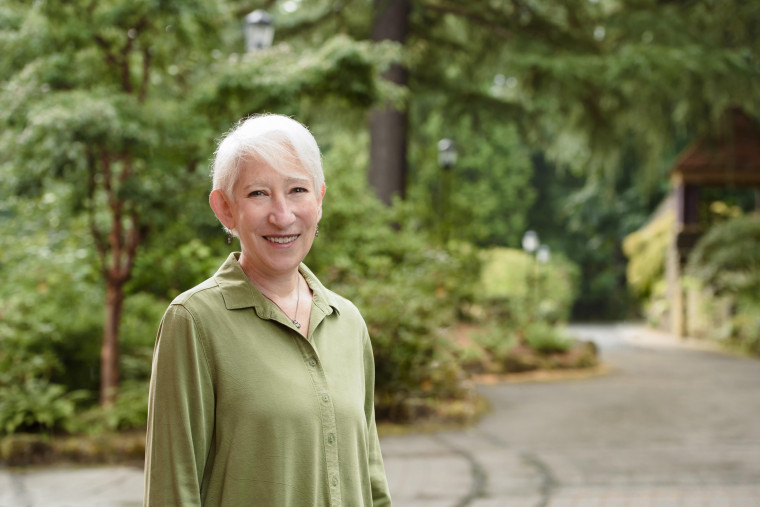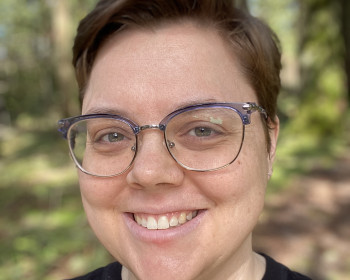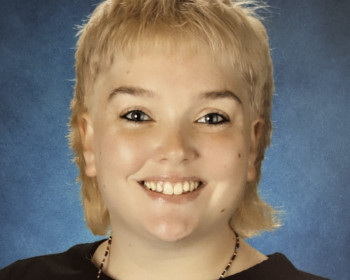Meet new professor Liza Finkel
Open gallery

Liza Finkel, an associate professor focused on science education, began her career craving solitude in the lab as a geology student. After transitioning into a teaching role, she found she enjoys nothing more than pursuing students’ inquiries. Driven by the goal of increasing minority participation in the sciences, Finkel serves as the faculty fellow on the Collaborative Approaches to Undergraduate Science Education (CAUSE 2.0) grant, a project funded by the Howard Hughes Medical Institute to encourage math and science participation for students in under-represented groups.
Describe your academic journey. How did you transition from an undergraduate program in geology to the doctoral study of science education?
When I first started out in geology, I was sure that I was not going to be a teacher. There were definitely teachers in my family, but I thought I wanted to work with rocks because they didn’t talk back. I liked working in a lab because I could be by myself and do experiments.
Then, I began my master’s program at the University of Michigan and I was offered a job as a teaching assistant for a summer program. I decided to do it, and I had an amazing time. It wasn’t just because I was outside in Wyoming for eight weeks; I really liked working with students. I liked doing that a lot more than working in the lab and being by myself.
When I finished my master’s degree I decided to get a job teaching. I was lucky to get a great teaching job and after that I never looked back. I started working with middle school students, then moved into high school. I started out thinking I wouldn’t want to be a teacher and ended up thinking there was nothing else I would rather be.
What parallels can you draw between middle/high school teaching and graduate level instruction?
I’m not teaching straight science anymore; I’m teaching people how to be teachers. Other than that it’s the same. You start by getting to know your students. Good teaching is mostly about building relationships with individuals and helping them meet their goals. It doesn’t matter if they’re in eighth grade or if they’re 50 and coming back to graduate school.
How did your love of science originate?
My parents were both writers. My father was a poet, but he did a lot of writing about science. He was part of a group exploring the Mammoth Cave system, and later he got invited by the National Science Foundation to be the first poet to go to Antarctica. So there was a lot of talk about science in my home. I was fascinated by how scientific ideas change. Scientific knowledge isn’t static. It changes over time and it’s about people interacting with observations they make. I’m also really interested in the philosophy and history of science.
How can teachers use inquiry-based learning to engage middle and high school students in the science classroom?
Find out what they’re interested in and find out what questions they have about their communities or what problems they find. If you ask enough questions and find out what they’re interested in, you can make a connection to science. Taking advantage of their interests and having them explore those with you is the best way to experience that. Instead of teaching science as a static body of knowledge — here’s these formulas —we explore and inquire together.
Lewis & Clark currently has a grant from the Howard Hughes Medical Foundation. The overall purpose is to increase the diversity of people who hope to pursue careers in science and science education. We hope that high school students will become interested in careers in science, and that Lewis & Clark undergrads will become interested in teaching.
How can the scientific community help minorities to succeed?
Helping find college students who can connect with minority high school students is really important. To help those high school students see people who are successful college students is a really big step. We plan to bring them to campus and help them find out how to apply to college. Engaging them in meaningful science and math activities is also incredibly important. That’s what LC undergrads will be doing with high school students in our partner schools.
What do you do in your spare time, if you have any?
I hike and run. I’ve run 10k, 15k and a half marathon distances. A 5k just feels too short, but right now a 10k feels about right. That’s my current focus. I also knit and read a lot. I just read a great book, called A Tale for the Time Being, by Ruth Ozeki. It’s a novel but it’s also about quantum physics. I also like to cook and eat out. One of my favorite Portland restaurants is Ned Ludd. I get overwhelmed by all the choices anytime I go anywhere with food carts. I think the best thing I’ve found at a cart is a chocolate sandwich. It was a baguette from Little T bakery — the best baguettes in town — and a little bit of olive oil, really good dark chocolate, and a little bit of salt.
More Teacher Education Stories
Teaching is located in room 402 of Rogers Hall on the Graduate Campus.
MSC: 14
email lcteach@lclark.edu
voice 503-768-6104
fax 503-768-6115
Department
Teaching, School Counseling, and Leadership Studies
Chair
Mollie Galloway
Elementary Program Director
Linda Griffin
Secondary Program Director
Liza Finkel
Administrative Specialist
Shanta Calem
Teaching
Lewis & Clark
615 S. Palatine Hill Road MSC 14
Portland OR 97219

